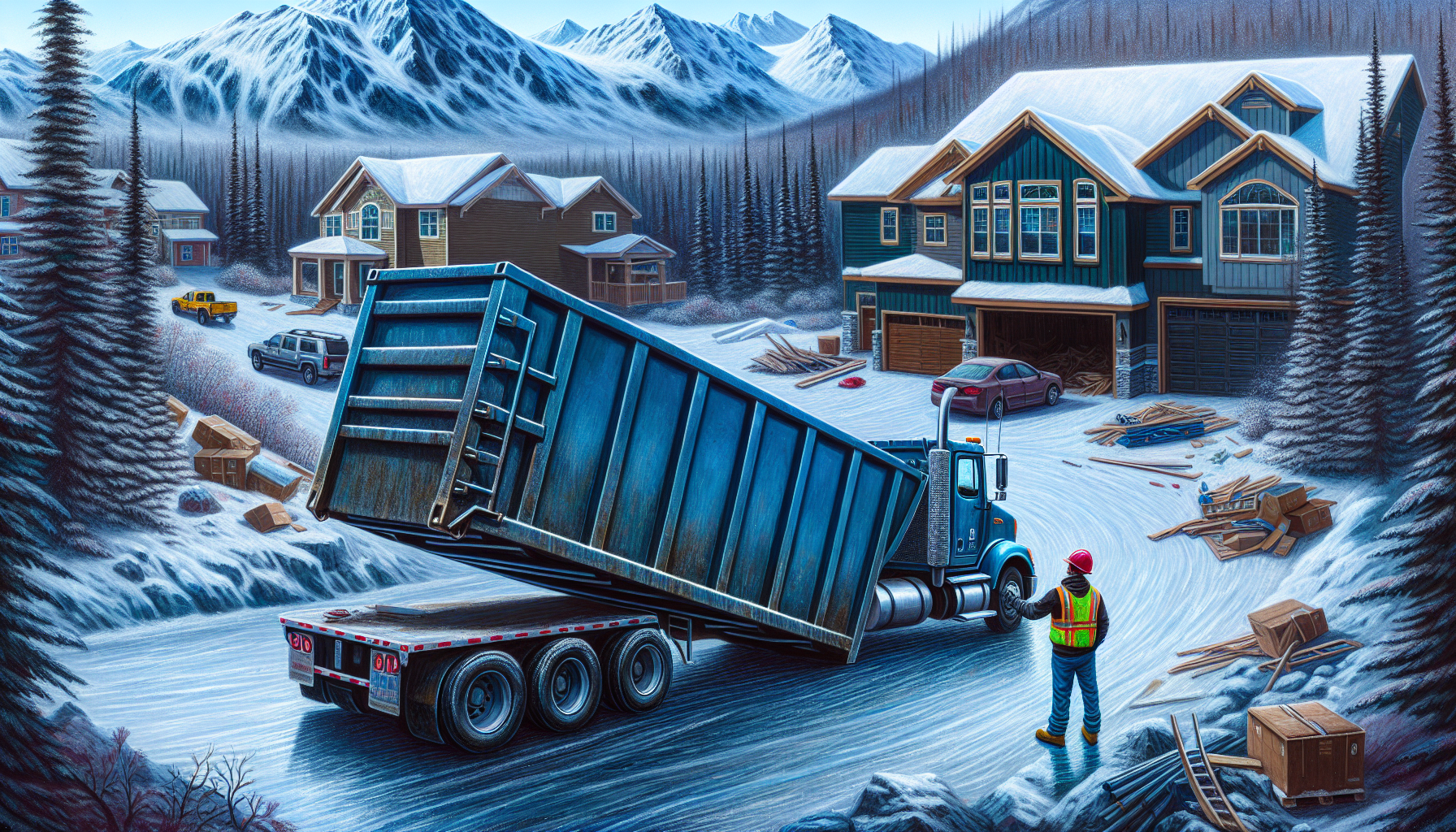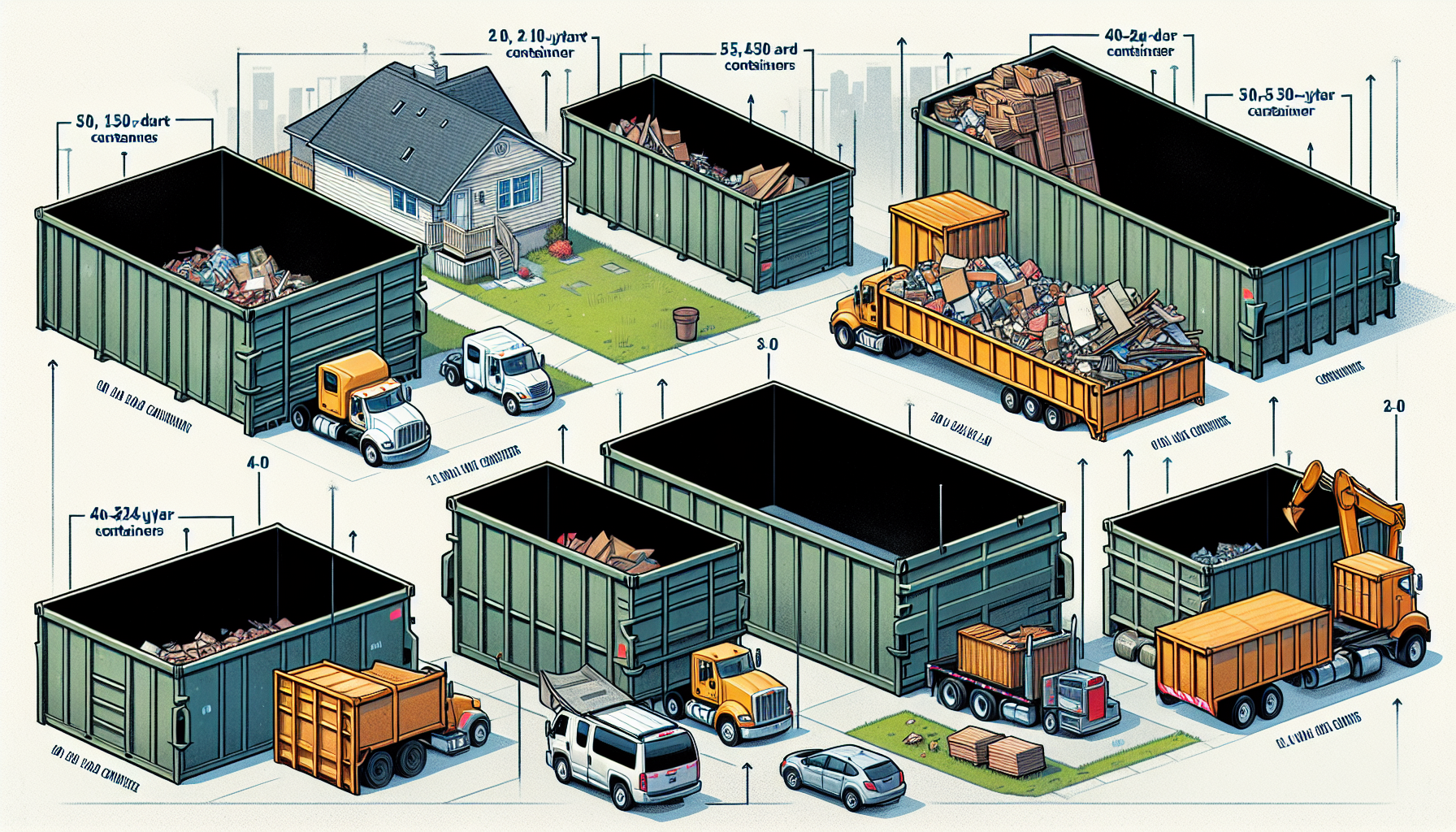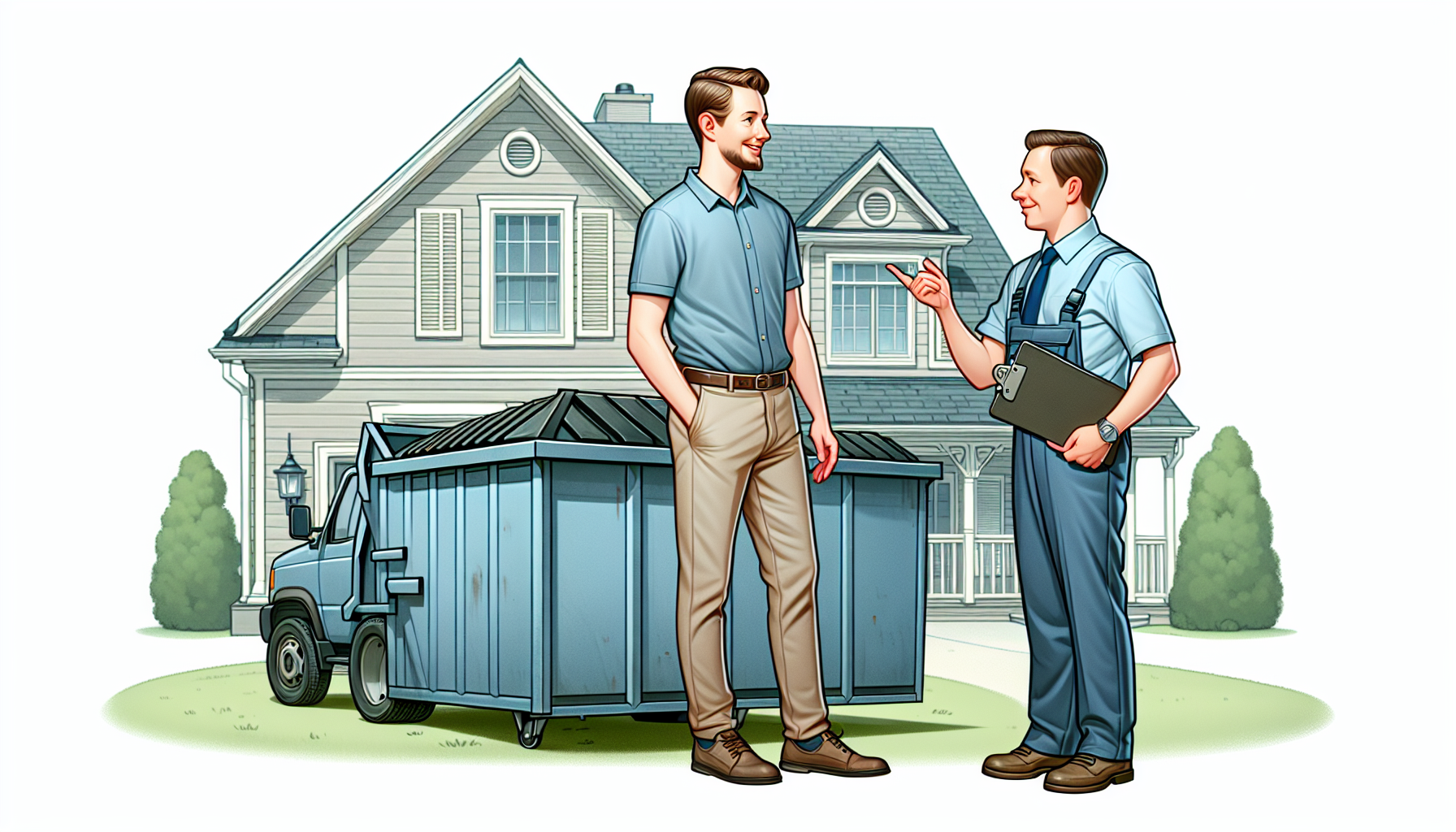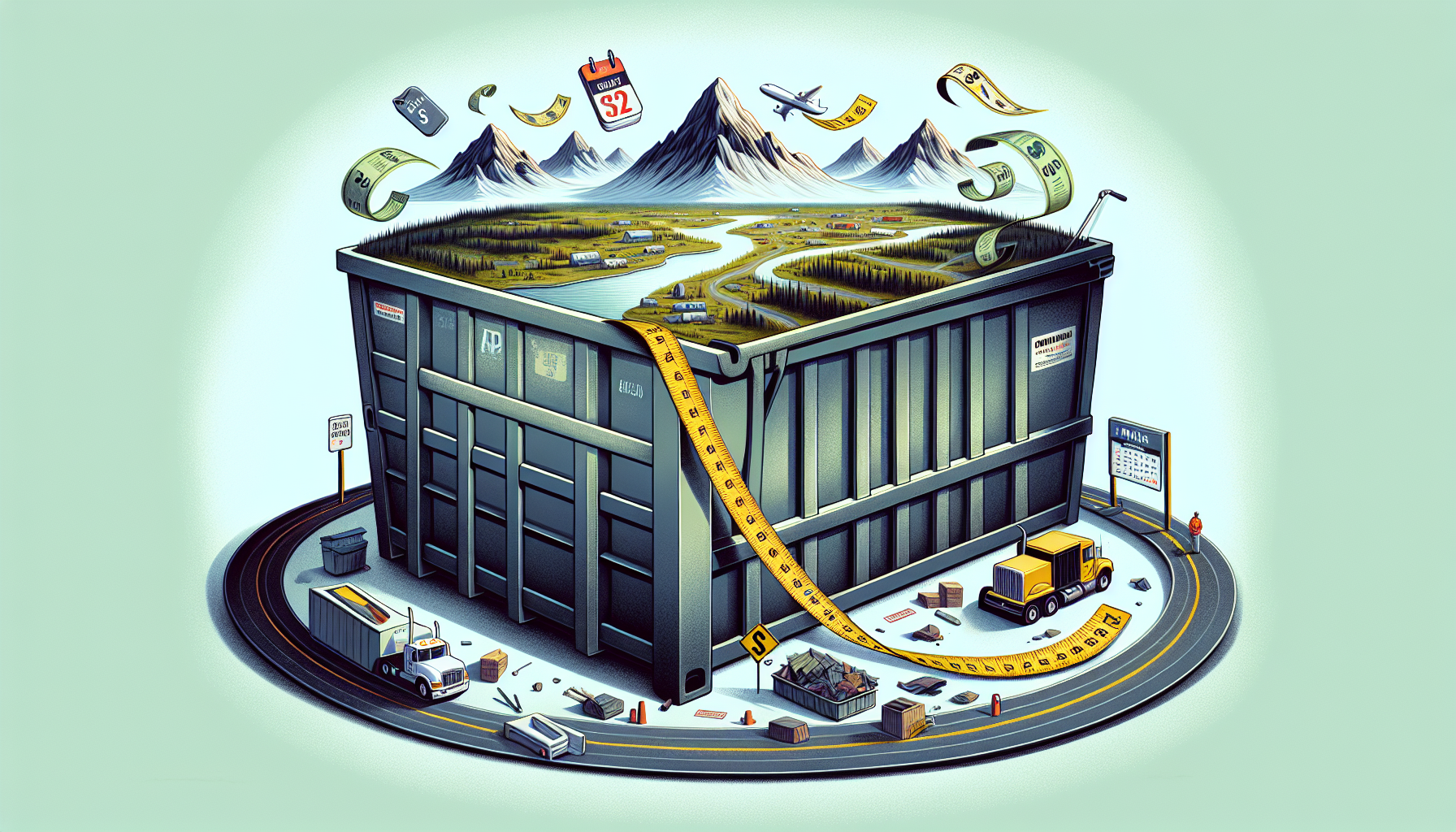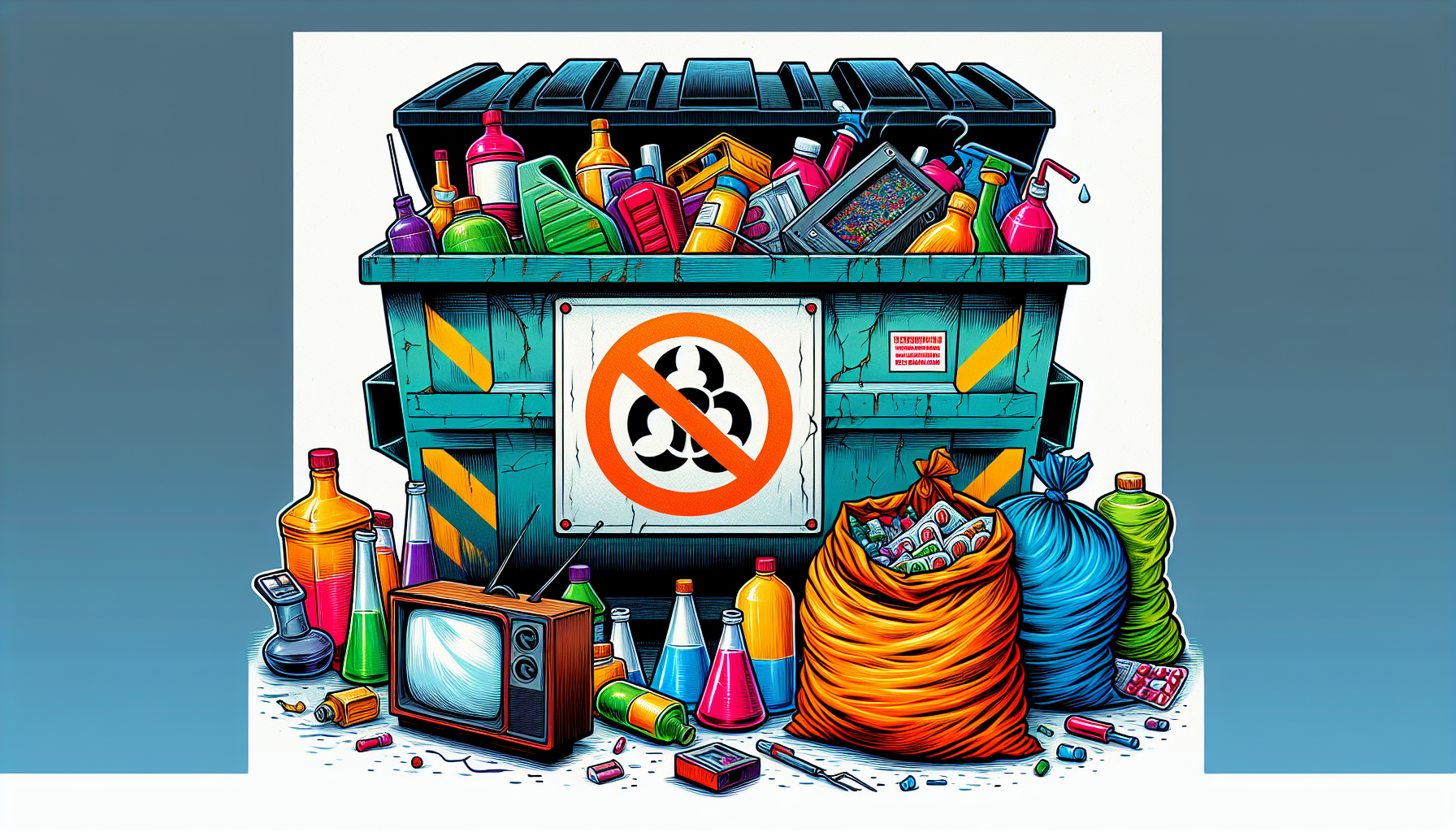Alaska
With LDR Site Services provides dumpster rental service to all of Alaska. Find the city nearest your project and give a call for a quote.
Your Essential Guide to Renting a Dumpster in Alaska: Convenient and Cost-Effective Solutions
If you are looking for a dumpster rental in Alaska, your top concerns are finding the right size, understanding the rules, and getting the best price. This article cuts right to the chase, providing you with the essential information needed for making an informed decision on renting a dumpster in Alaska. We cover everything from selection to costs, setting you up for a successful project.
Key Takeaways
- Choosing the right dumpster size and a reliable waste management service in Alaska is vital for efficient waste disposal, factoring in project scale and local regulations, including permits for public space placement.
- The cost of renting a dumpster in Alaska varies based on the dumpster size, rental period, distance from service provider to site, fuel prices, and landfill fees, with specific prohibited items and hazardous materials disallowed in dumpster disposal.
- Preparing the delivery site, coordinating the delivery and pickup schedule, maximizing loading efficiency, and understanding the options for extending the rental period are key actions for a smooth dumpster rental experience.
Alaska Dumpster Rental Basics
Renting a dumpster in Alaska may seem like a daunting task, but it doesn’t have to be. The process begins with two fundamental steps: selecting the right dumpster size and service provider to cater to your specific project needs. Choosing the appropriate dumpster size is a critical component of the rental process, as it ensures you have enough space to dispose of all your waste in one go.
In addition, coordinating the delivery and pickup schedule is an essential part of the dumpster rental process. This not only saves you time but also helps avoid any unwanted mishaps or misunderstandings. You’re not alone in this process; additional resources, such as tools and guides, can assist you with dumpster rental.
Now, with the basics under your belt, let’s delve deeper into how to select the ideal waste management service for your needs.
Selecting a Reputable Waste Management Service
When it comes to waste management service, reliability, and customer-focused services are paramount. In Anchorage, Alaska Waste stands out as a leading waste management company. With over 25 years of service, they have established a strong reputation through their dedication to customer service.
Customer reviews and testimonials are essential resources for evaluating the reliability and quality of waste management companies. Whether you’re looking for a free quote or information on junk removal, a reputable company’s website should have all the details you need. Remember, choosing a reliable waste management service is crucial for a successful dumpster rental experience in Alaska.
Understanding Local Regulations and Permits
Now, let’s talk about local regulations and permits. In Anchorage, permits are generally not required if you’re placing the dumpster on private property. However, if you’re planning to put the dumpster in public areas, a permit is necessary. If your dumpster requires street delivery, you need to obtain a permit, which involves paying associated fees and fulfilling additional requirements imposed by the municipality.
But don’t fret! With the correct information and preparations, this process can be a breeze.
Choosing the Right Dumpster Size for Your Project
Choosing the right dumpster size is like choosing the right tool for a job – it makes the task at hand much more manageable. Roll-off dumpsters are versatile and are used for a wide range of projects, such as:
- Household cleanouts
- Home remodeling
- General construction
- Demolition
They offer convenient waste disposal solutions for various needs. The variety of sizes and styles available can accommodate different types of waste and debris.
For instance, a twenty-yard dumpster is typically the ideal fit if you’re planning a home cleanout or a light demolition. If your project is larger or smaller, don’t fret! Let’s break down the different dumpster sizes and their suitability for various projects.
Small-Scale Projects: Ten-Fifteen Yard Dumpsters
Let’s start small. If you’re undertaking small-scale projects such as home cleanouts, minor renovations, and small to medium-sized residential and commercial tasks, then a ten-fifteen-yard dumpster is your best bet.
The advantage of a ten-yard dumpster is its capacity. It can hold up to five pickup truckloads or approximately 5,000 pounds of debris. So, if your project involves heavy materials like roofing or concrete but in smaller quantities, a ten-yard dumpster is a suitable choice.
Medium-Scale Projects: Twenty-Thirty Yard Dumpsters
Moving up the scale, we have twenty – -thirty-yard dumpsters. These are highly versatile, suitable for a variety of medium-scale projects such as:
- larger home renovations
- construction jobs
- landscaping projects with a modest amount of debris
- minor construction spanning multiple buildings
If you have any of these projects, a twenty-yard dumpster is what you’ll need.
On the other hand, thirty-yard dumpsters work for:
- extensive residential or commercial cleanups
- home expansions
- demolition projects
- comprehensive estate cleanouts
If your home remodels or kitchen renovations involve the disposal of bulky materials, thirty-yard dumpsters are the ideal choice.
Large-Scale Projects: Forty Yard Dumpsters
For the big guns, we have forty-yard construction dumpsters. These giants can accommodate the waste from large-scale projects. Suitable projects for these include commercial cleanouts and major home renovations.
So, if you’re planning extensive and prolonged projects such as substantial home renovations or large commercial cleanouts, a forty-yard dumpster is the ideal choice.
Dumpster Delivery and Pickup Tips
Now that you’ve chosen the right dumpster size for your project, let’s focus on some practical aspects of dumpster rental, such as delivery and pickup. Dumpster delivery typically occurs during regular business hours, and the placement process usually takes under 10 minutes. But before we delve deeper into the process, let’s discuss how to prepare the space for the dumpster placement.
Preparing the Space for Dumpster Placement
When preparing the space for dumpster placement, you must ensure a space of sixty feet in length, ten and a half feet in width, and a height clearance of twenty-five to thirty feet is available for dumpster delivery. A double-car driveway typically offers enough space for a dumpster and vehicle access. It’s a good idea to lay plywood to protect the driveway or placement surface to prevent damage.
Before the dumpster arrives, make sure to:
- Clear your driveway or the designated space of any cars and other items
- Use colored tape, boards, or cones to mark the area for the dumpster placement
- If you’re planning for street delivery, reserve space with cones and communicate with your neighbors.
On the day of delivery, ensure that the drop-off area is free of obstacles, including overhead obstructions, and that any property gates are open for the driver’s access. If the dumpster is being delivered to the street, obtaining a permit from the city, clearing enough space by using cones, and communicating with your neighbors is often necessary.
Coordinating Dumpster Delivery and Pickup
After preparing the space, the next step is to coordinate the dumpster delivery and pickup. To ensure a smooth process, ensure any property gates are open and the drop-off area is accessible on the scheduled delivery day. Schedule your dumpster rental three days in advance to avoid last-minute hiccups and ensure availability.
Bear in mind that specific delivery times cannot be guaranteed due to factors such as:
- Fuel efficiency routes
- Delays at landfills
- Previous drop-offs
- Traffic
Communicating regularly with your service provider can keep you updated on any possible changes or delays in delivery times.
Pricing Factors for Dumpster Rentals in Alaska
Now that you’re well-versed in the basics of dumpster rental let’s talk about the elephant in the room – the cost. The pricing for dumpster rentals in Alaska can vary due to several factors, including:
- The dumpster size
- Rental period
- Landfill fees
- Fuel prices
- Distance
Dumpster Size and Rental Period
The first and foremost factor influencing the cost of your dumpster rental is the size of the dumpster. In Anchorage, dumpster rental costs increase with dumpster size, ranging from approximately $785 for a ten-yard dumpster to $1117 for a forty-yard dumpster. The rental period also plays a significant role in determining your total cost. The standard rental period for dumpsters in Anchorage is ten days, which includes a set maximum tonnage. However, you have the option to extend this period for an additional fee.
It’s also worth noting that the cost of renting a dumpster in Anchorage can vary due to factors such as inventory availability, seasonal changes, and the types of debris being disposed of. For instance, rental costs for a twenty-yard dumpster designated for household use are $883, while the rate for the same size intended for construction debris is $990. So, it’s crucial to consider all these factors when budgeting for your dumpster rental.
Landfill Fees, Fuel Prices, and Distance
Apart from size and rental period, other factors influence the cost of dumpster rentals. These factors include:
- The distance from the service provider to the delivery site, which can affect the delivery cost
- Current fuel prices, which can cause fluctuations in the delivery cost
- Landfill fees, which significantly impact the rental expenses of dumpsters
Prohibited Items and Hazardous Materials
Now, let’s shift our focus to another important aspect of dumpster rental – the disposal of hazardous materials and prohibited items. You might be surprised to learn that not all waste can be thrown into a dumpster. Certain hazardous materials, including:
- Oils
- Fuels
- Paints
- Toxic chemicals
are prohibited in dumpsters due to their potential to cause environmental damage and health risks.
Hazardous Materials
Hazardous materials are toxic, reactive, flammable, corrosive, or EPA-listed wastes are strictly prohibited from being disposed of in dumpsters. Specific hazardous substances not allowed in Anchorage dumpsters include:
- Explosives
- Radioactive waste
- Liquid waste
- Refrigerators containing Freon
- Batteries
- Fluorescent lights containing mercury
- Undried paint
Hazardous materials like antifreeze, batteries, cleaners, corrosives, fluorescent lamps, fuels, paint, pesticides, and resins should be disposed of at designated facilities in Anchorage rather than in dumpsters. These regulations prevent potential environmental damage and ensure that hazardous materials are disposed of safely and responsibly.
Medical Waste and Propane Tanks
Apart from the general hazardous materials mentioned above, other items are prohibited from being disposed of in a dumpster. One of those is untreated medical waste, which can pose a biological hazard. These items are regulated due to the public health and environmental risks associated with their disposal.
On the other hand, treated medical waste can be accepted for disposal if it complies with specific policies, differentiating from the banned untreated medical waste, such as:
- Ammunition
- Explosives
- Asbestos
- Smoke alarms
- Pharmaceuticals
These materials are also prohibited from dumpster disposal and are not accepted at hazardous waste facilities. It’s crucial to understand these prohibitions and regulations to avoid legal penalties and protect the environment.
Tips for a Successful Dumpster Rental Experience
You’ve made it this far – you’re now well-equipped with the knowledge you need to rent a dumpster in Alaska. But before we wrap up, let’s share some practical tips to ensure a smooth and successful dumpster rental experience. After all, knowledge is power, but only if you put it into practice!
Efficiently Loading Your Dumpster
Firstly, when it comes to loading your dumpster, efficiency is key. Here are some tips to help you maximize space and prevent contents from shifting during transport:
- Disassemble broken furniture and appliances
- Place large items flat to reduce empty spaces
- Fill every space in the dumpster, including inside other items and gaps, with smaller debris
By following these tips, you can increase loading efficiency and make the most of your dumpster space.
While it’s important to maximize space, avoid overloading the dumpster to prevent hazards such as difficulty in transport and potential safety violations. Use the dumpster’s door to load large and bulky items first to create a stable base for stacking other items. Distribute the weight of the items evenly throughout the dumpster to maintain balance and avoid loading issues during transport.
Extending Your Rental Period
Lastly, let’s talk about extending your rental period. The rental period for a dumpster can be extended if needed, making your dumpster longer in terms of usage. To do this, you’ll need to contact the rental company to request additional rental days.
While the standard dumpster rental periods in Anchorage typically span ten days, shorter three-day rentals are also standard. Remember that extending the rental period beyond the standard ten days will result in additional fees for dumpster service.
Summary
And there you have it – your comprehensive guide to renting a dumpster in Alaska. From selecting the right dumpster size and service provider to understanding local regulations, pricing factors, and prohibited items, we’ve covered it all. With this newfound knowledge, you’re ready to embark on your dumpster rental journey, whether it’s for a small-scale home cleanout, a large-scale construction project, or anything in between. Remember, a successful project begins with efficient and responsible waste management!
Frequently Asked Questions
What size dumpster should I rent for a home cleanout?
You should rent a twenty-yard dumpster for a home cleanout. It is typically suitable for this type of project.
How can I prepare my space for dumpster delivery?
Make sure you have a space of sixty feet in length, ten and a half feet in width, and a height clearance of twenty-five to thirty feet available for the dumpster delivery, which ensures a smooth and successful delivery process.
What factors affect the cost of dumpster rental in Alaska?
The cost of dumpster rental in Alaska is affected by factors such as dumpster size, rental period, landfill fees, fuel prices, and distance.
What items are prohibited from dumpster disposal?
You should not dispose of hazardous materials, untreated medical waste, or propane tanks in a dumpster due to safety and environmental concerns.
How can I extend my dumpster rental period?
You can extend your dumpster rental period by contacting the rental company and requesting additional rental days.
